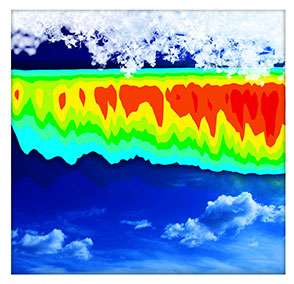Arctic clouds are widespread and play an important role in climate, but different models have produced widely varying predictions about the properties of these clouds. This study analyzes simulations of Arctic clouds by 11 different models and identifies the key factor responsible for the variable predictions.
The findings highlight the important role of ice particle size distribution in determining cloud evolution and suggest that adjustments of this parameter in climate models will reduce variability and improve accuracy. By enabling scientists to develop a better understanding of how clouds form and evolve, this study will improve climate predictions.
Mixed-phase clouds occur at below-freezing temperatures and consist of both cloud droplets and ice crystals. Because the processes that regulate the formation and evolution of these clouds are not well understood, models have produced widely varying predictions about the clouds' properties. To identify sources of this variability, researchers from the Department of Energy's Pacific Northwest National Laboratory, the National Aeronautics and Space Administration, the Massachusetts Institute of Technology, and 10 other institutions performed simulations of mixed-phase Arctic clouds by 11 different models using computing resources such as the Chinook supercomputer in the Molecular Science Computing Facility at EMSL, the Environmental Molecular Sciences Laboratory, a DOE national scientific user facility.
The researchers constrained the properties of individual ice particles, spatial resolution, and several other parameters across the models to isolate differences due to model physics. The different models produced highly variable predictions mainly because they assumed different ice particle size distributions. Many models assumed by default that ice crystal size distributions were very broad and contained many large particles. The new findings suggest that this unrealistic assumption can lead to erroneous predictions about key cloud properties, such as the balance between droplets and ice crystals as well as cloud longevity. Therefore, it will be important to adjust the ice particle size distribution parameter in climate models to reduce variability in the predictions. The findings also underscore the need for a better understanding of the distributions of ice particle sizes that occur in nature.
More information: Ovchinnikov, M., et al. "Intercomparison of large-eddy simulations of Arctic mixed-phase clouds: Importance of ice size distribution assumptions." J. Adv. Model. Earth Syst. 6, (2014). [DOI: 10.1002/2013MS000282].
Provided by Environmental Molecular Sciences Laboratory






















